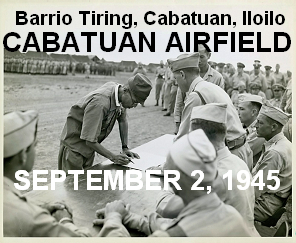
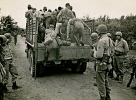

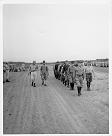


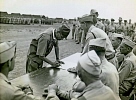
Col. Ryoichi Tozuka signs the surrender instrument
as Col. Raymond G. Stanton looks on.
Cabatuan Airfield
Barrio Tiring, Cabatuan, Iloilo
Panay Island, Philippines, September 2, 1945
|
|
- o -
|
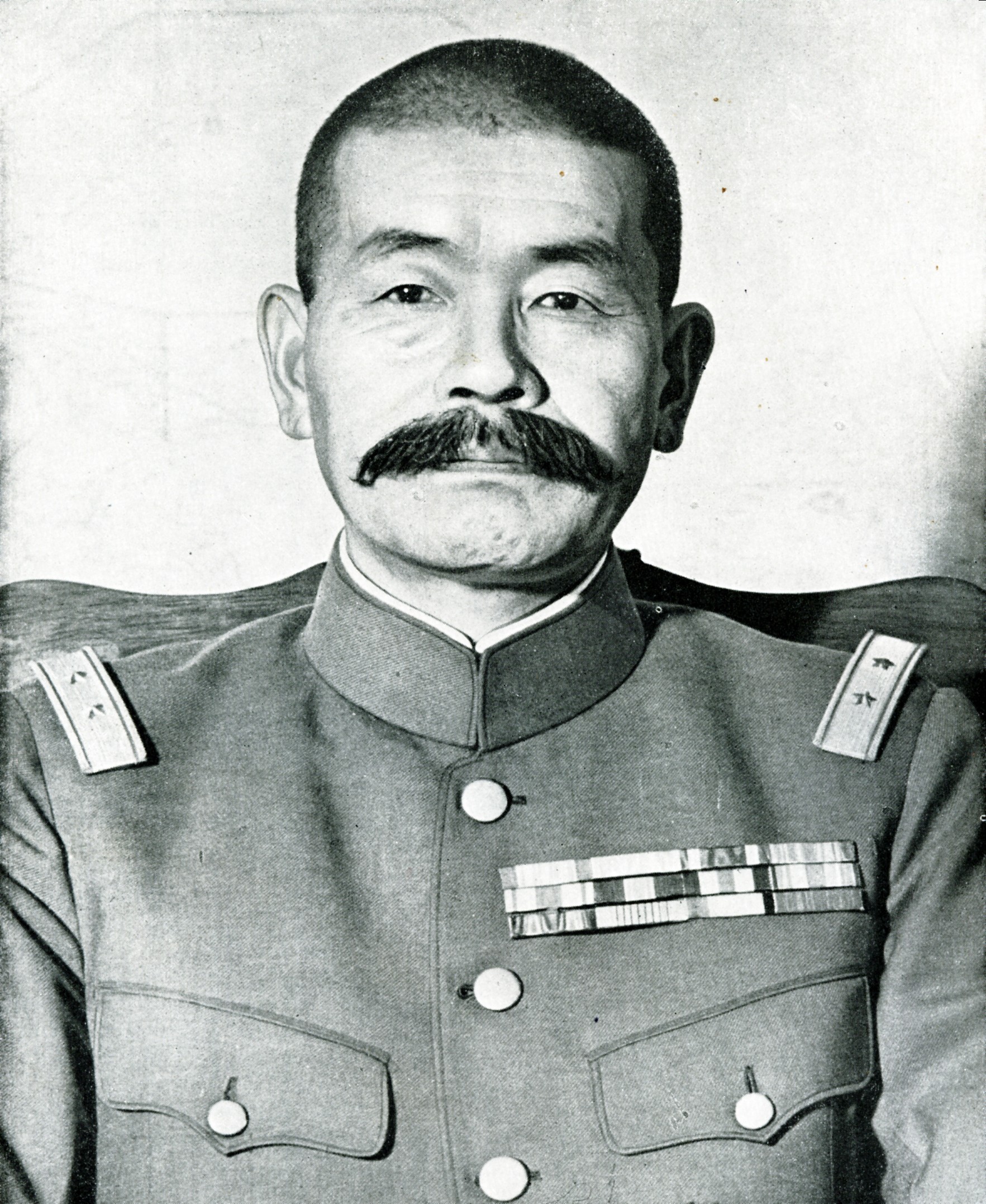
Lt. Gen. Shizuichi Tanaka was a Japanese Military Governor of the Philippines during World War II
|
|
3.2 Ambush of the Army Commanding General Tanaka
Panay, after the second phase of mopping-up in mid-February 1943, appeared rather peaceful. This was mainly because of internal conflicts among local resistance forces and because they opted to avoid any confrontations with the main forces of the Japanese Army. People came back to Iloilo City, and the markets got crowded.
Manila headquarters sent Captain Junsuke Hiiomi and his propaganda unit of the Army Headquarters Department of Information (Hôdôbu) to Panay for propaganda work. The propaganda unit, with the Gunsei Kambu and the cooperation of the civil government of the Philippines, distributed posters
and flyers. Garrison soldiers also went around towns and villages to ardently inform the people that, ‘We Japanese came to the Philippines to liberate you from American exploitation. The enemy of Japan is the US and Filipinos are our friends. We are the same brown color, pareho (the same) Orientals. Let us drive the Whites out of the East. We also guarantee the lives of the guerrillas who fall to the Japanese Army.’
There were reasonable results from these efforts. The Hitomi propaganda unit headquarters had plenty of stocks of soap, matches and other basic commodities, and distributed them to the villagers and townspeople. A civilian attached to the army named Kato–a university graduate in the US then employed by the Japanese Army–gave fluent speeches in English.
The Manila headquarters also dispatched a Strategy Section led by a captain who was a graduate from the Nakano school on intelligence. The leader never wore military uniform; he disguised himself as a civilian while collecting infomation and trying to make guerrillas fall into hands of the Japanese Army.
The business section of Iloilo City regained vigor with activities, such as the repair of steam engines and railways. The Shimamoto Ship Building Company built wooden ships, the Ishihara Company developed the copper mines at San Remigio, Antique and Pilar, Capiz, and Matsui Trading Company bought copra and sent sugar to Japan. Given this situation, the garrison headquarters at Cebu City must have rather extravagantly reported to Manila that this resurgence came because of the mopping up operations and subsequent peace in Iloilo.
|
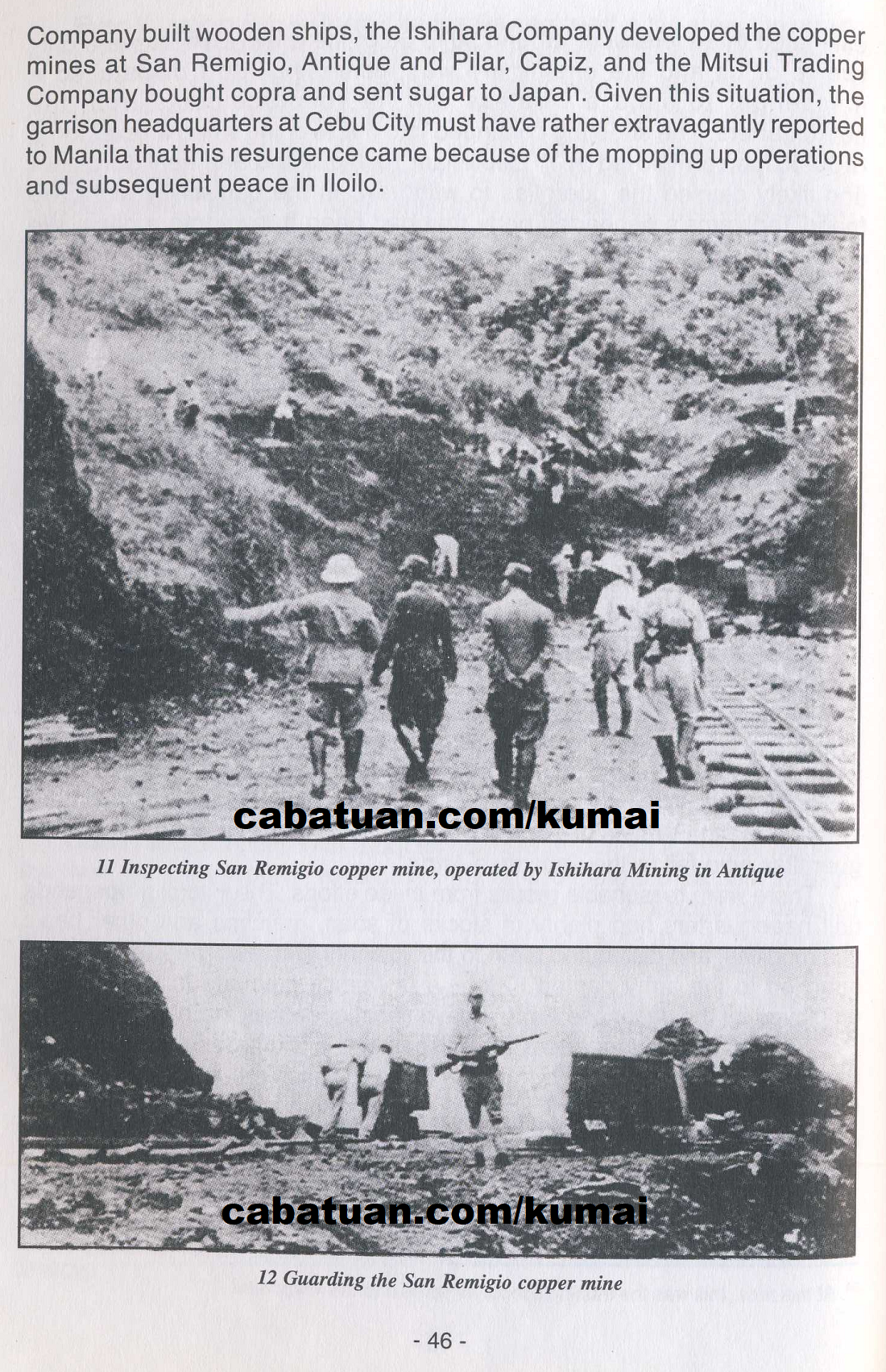
Inspecting San Remigio Copper Mine, operated by Ishihara Mining in Antique. Page 46.
|
|
Meanwhile, in Manila, the 14th Army Commanding General Lieutenant General Masaharu Homma had been relieved and sent back to Japan, blamed for the failure in the siege of the Bataan Peninsula. Lieutenant General Shizuichi Tanaka became the new Commanding General of the 14th Army. Soon after he took over the position, General Tanaka went around the main areas of the Philippines. When notified of his impending visit, the Panay garrison headquarters pulled together high-quality cars for his use and that of his delegation that included newspaper reporters. The Cebu garrison commander General Inoue personally came over to show General Tanaka around.
To the accompanying staff officers of General Tanaka from the Manila headquarters: General Inoue had recommended that the general should not pass Janiuay because of expected dangers beyond that area.
If he should, I ask that General Tanaka be in an armored car. General Inoue was not very confident about the local security to show him around in a well appointed though unarmored car. However, those staff officers – who had only been familiar with the more peaceful situation in Manila and Luzon Island and who had never experienced the terrors of guerrilla warfare–said, ‘Well, it should be all right. The General is elderly, so let us take the cars.’
In the morning of February 20, 1943, aboard more than 10 cars, Commander Tanaka and other officers arrived at Janiuay where I was stationed as garrison commander. I assembled the neatly dressed soldiers and we nervously lined up on the road to welcome the general. The convoy was an unprecedented line of high-quality cars, the largest and most distinguished of which was the Commander’s vehicle. He was a solemn man with a prominent moustache, and he kindly thanked me for being dutiful. I looked at the line of cars and thought that this was dangerous.
Just three weeks before, I had been ambushed myself by guerrillas and the garrison had been attacked a few times. Though I warned unit commander Colonel Tozuka and Captain Watanabe of the dangers of guerrilla attack, they all left in the cars for Calinog as planned. Eventually, we heard the sounds of fierce firing from between the towns of Janiuay and Lambunao. I had about a dozen men with the party and that put us in a dangerous position. The firing lasted for about 15 minutes, after which we heard the sound of cars coming back. As the Commander’s car was making a sharp turn on a steep hill, waiting guerrillas started shooting from the left flanks. Several shots hit the General’s car and the kempei who guarded him was shot through the left eye. The General returned to Janiuay with his famous moustache drooping. He ordered for the packed lunch that they had brought with them. After a short rest, he left for further inspection – this time, in an armored car.
|

Guarding the San Remigio Copper Mine. Page 46.
|
|
Upon the return of the officials to Iloilo City, garrison commander Inoue and the staff officers argued over the attack on General Tanaka. General Inoue shouted at the staff officers: ‘You are to blame for not listening to me and insisting on the inspection by the General in unarmored cars.’ Soon after, garrison commander Inoue got a relief order and returned to Japan. Major General Takeshi Kano took over his command. No reason was given for sending General Inoue away, but it appears that he had angered the 14th Army staff of Manila headquarters. From then on, the army staff decided on a policy meant to annihilate the Panay guerrillas.
On March 10, 1943, I was ordered to be Ordnance Officer (in charge of weapons) at the garrison headquarters then at the Iloilo High School.
In the last few months, Iloilo City had regained its prewar population. I was able to enjoy fresh vegetables and fruits, Chinese restaurant dishes, and became popular among young Filipinas at restaurants.
One day in April, Governor Fermin Caram invited me, along with Battalion Commander Tozuka, to dinner at his residence. The mother of Lieutenant Colonel Julian Chaves also attended and thanked the Commander that she was placed under the kind protection of the Governor.
|
|